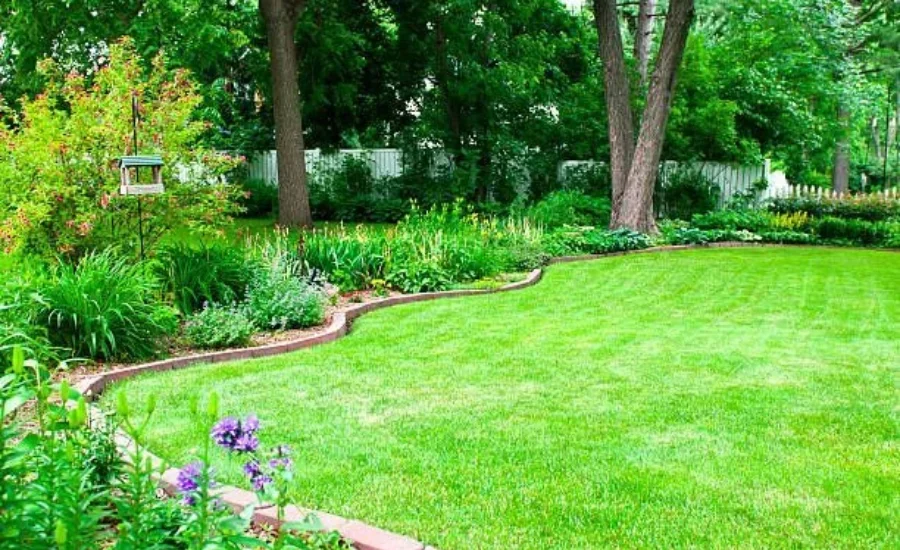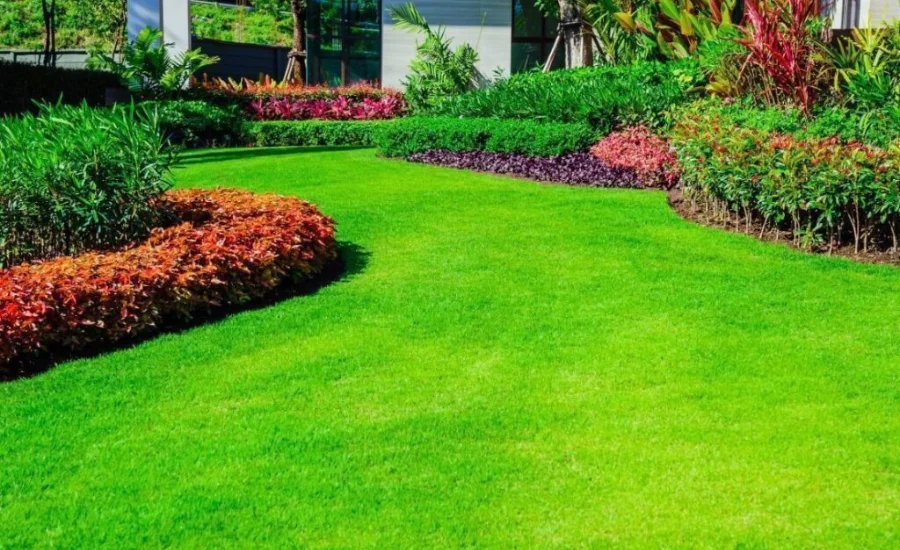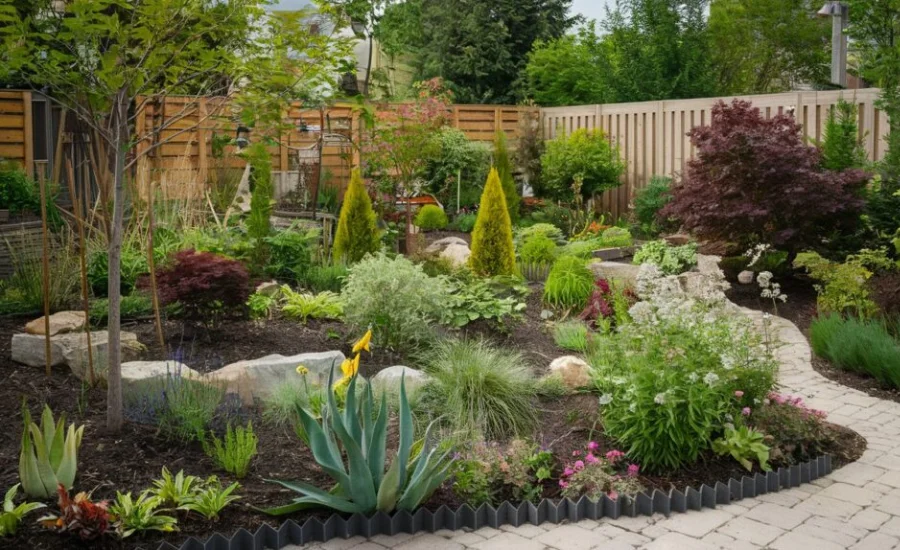GardndgingExpert.com/BlogTransform: Your Outdoor Space with Creative and Functional Garden Edging
Welcome to the fascinating world of GardndgingExpert.com/BlogTransform, where gorgeous aesthetic appeal combines with useful usefulness to turn any yard into an amazing scene. Here at GardenEdgingExpert.com/blog, we provide a thorough examination of garden edging methods that enhance the overall appeal of your outdoor space while also clearly demarcating the borders of various garden regions. For novice and seasoned landscapers alike, our site offers a plethora of advice, detailed instructions, and creative ideas specifically suited for garden edging.
Garden edging transcends its practical role of separating flower beds, pathways, and lawns; it is an art form that, when executed skillfully, can dramatically enhance the visual dynamics of your garden. Explore how GardenEdgingExpert.com/blog can assist you in selecting the ideal materials, applying them with precision, and drawing inspiration from expert insights. Join us to discover how to bring your garden’s aesthetic vision to life with creativity and expertise.
Elevate Your Garden with Thoughtful Edging

A thoughtfully designed garden border does more than just enhance your garden’s aesthetics; it merges style with functionality. By clearly delineating areas such as flower beds, pathways, and lawns, these borders introduce a sense of organization and visual clarity to your outdoor space. This separation not only beautifies your garden but also helps prevent grass and weeds from infiltrating your carefully curated plant beds.
Moreover, the deliberate use of angles and curves in garden edging serves as both a guide and a focal point, adding elegance and purpose to your landscape. Whether your goal is to create smooth transitions between different garden zones or to accentuate the architectural features of your outdoor area, mastering GardndgingExpert.com/BlogTransform can transform your garden into a refined and well-defined haven.
Elevate Your Garden with Versatile and Functional Edging
Garden edging is a key element in creating a polished and organized landscape. It defines the boundaries between garden beds and lawns, giving your outdoor space a neat, well-maintained appearance. With an array of materials and styles available, you can select edging that enhances the overall design of your garden.
Effective GardndgingExpert.com/BlogTransform also plays a crucial role in weed and pest control. By establishing a physical barrier, it helps prevent unwanted plants and insects from infiltrating your garden beds. This reduces the need for frequent weeding and pesticide use, fostering a healthier garden environment.
Additionally, edging aids in soil retention by keeping soil and mulch within designated garden areas, minimizing erosion and runoff. This ensures that your plants receive the necessary nutrients and water for robust growth while maintaining clean pathways and lawns by preventing soil spillage.
Maintenance becomes more manageable with clearly defined garden edges. Edging acts as a guide for lawn mowers and trimmers, minimizing the risk of damaging plants and ensuring a consistent cut along the borders. This efficiency saves both time and effort in garden upkeep.
Different types of GardndgingExpert.com/BlogTransform offer various benefits and aesthetic options:

- Metal Edging: Known for its durability and sleek appearance, metal edging, typically made from aluminum or steel, resists rust and corrosion. It’s easy to install and versatile in design, allowing for clean lines and intricate patterns.
- Stone and Brick Edging: Providing a classic and timeless look, stone and brick edging is highly durable and suitable for traditional garden styles. While installation can be labor-intensive, it offers a long-lasting solution that adds texture and visual interest.
- Plastic Edging: A cost-effective and versatile choice, plastic edging is lightweight and easy to install. Available in various colors and styles, it can mimic the appearance of more expensive materials. However, it may not be as durable and can become brittle over time.
- Wood Edging: Wood edging adds a natural, rustic charm and can be customized with stains or paint. Though it is easy to install, it requires regular maintenance to prevent rot and insect damage.
- Concrete Edging: Concrete offers durability and customization, with the ability to be poured into various shapes and designs. Resistant to weather conditions and requiring minimal upkeep, it’s a long-lasting choice for creative garden borders.
Choosing the right garden edging enhances both the beauty and functionality of your outdoor space, making it an essential element in garden design and maintenance.
Steps for Installing Garden Edging: A Comprehensive Guide
Before beginning your GardndgingExpert.com/BlogTransform project, it’s essential to plan your design thoroughly. Start by measuring the area where you intend to install the edging and mark the boundaries using stakes and string. Choose an edging material that complements your garden’s aesthetic and fits within your budget.
Preparing and Installing the Edging
Digging a trench is the next step, and it should align with the marked boundaries. The trench’s depth and width will vary depending on the type of edging material you are using. Ensure the trench is level to ensure a consistent and professional appearance.
Once the trench is prepared, place the edging material into it, making sure it is aligned properly. For materials like metal, plastic, and wood, you might need to use stakes or anchors to secure the edging in place. On the other hand, stone, brick, and concrete edging generally does not require additional support but should be firmly embedded in the soil.
After the edging is positioned, backfill the trench with soil, packing it firmly around the edging material. This step helps to stabilize the edging and prevents it from shifting over time. For a polished finish, consider adding a layer of mulch or decorative stones along the edge.
Explore Creative GardndgingExpert.com/BlogTransform Options

Living edging offers a vibrant and natural way to define garden borders. By planting low-growing shrubs, flowers, or grasses along the edges of your garden beds, you create a lush and organic look that also provides valuable habitat for pollinators. This approach enhances the beauty of your garden while supporting local wildlife.
For a sustainable and eco-friendly choice, consider using recycled materials for your garden edging. Repurposing old bricks, reclaimed wood, or even glass bottles not only helps reduce waste but also adds a unique and personal touch to your garden design. This method combines environmental responsibility with creative flair.
Incorporating mixed materials into your GardndgingExpert.com/BlogTransform can produce a visually striking and dynamic effect. By combining elements like stone with wood or metal with concrete, you can achieve a distinctive look that plays with various textures and colors. This approach allows you to experiment with different materials, enhancing the overall aesthetic of your garden.
Final Words
GardndgingExpert.com/BlogTransform is more than just a practical necessity; it is a transformative element that enhances the beauty and functionality of your outdoor space. Whether you choose living plants, recycled materials, or a mix of different elements, the right edging can define your garden’s boundaries, prevent weed and pest invasions, and improve soil retention. By carefully selecting and installing the appropriate materials, you can create a garden that not only looks polished and organized but also reflects your personal style and commitment to sustainability. Embrace the creative possibilities of garden edging to turn your outdoor area into a beautifully designed and well-maintained haven.
For more information and updates join us on Brain Rusher.
